There are several mushrooms that have gained prominence on the global stage. While some species are rare, hard to cultivate, and rarely seen outside of their native habitat, others seem to be everywhere: in the grocery store, at the farmers’ market, in recipes from your favorite food blogs, and in lists of healthy meat alternatives. Two of the most popular mushrooms in the world are the oyster mushroom and the cremini mushroom.
- Both oyster mushrooms and cremini mushrooms are edible, widely-available mushrooms.
- Both have a mild flavor and are popular ingredients in many different recipes.
- Both are relatively easy to cultivate on a wide scale or even grow at home.
- Oyster mushrooms grow in a forest environment and require wood to gain nutrients, but cremini mushrooms grow in soil and appear in moist pasture areas.
- Oyster mushrooms grow in shelf-like formations on the side of wood, while cremini mushrooms grow from the soil from stems with umbrella-shaped caps.
- Oyster mushrooms can grow to be several inches across and in clusters, while cremini mushrooms are usually smaller and can grow individually or in groups.
This article compares and contrasts these features and other details of oyster mushrooms and cremini mushrooms so that by the end, you know some of the key features of each, including where they grow, their appearance, how they taste, and what you can use them for. Let’s dive in and learn about these two globally popular mushroom species today!
Oyster Mushrooms vs. Cremini Mushrooms
| Characteristic | Oyster Mushrooms | Cremini Mushrooms |
|---|---|---|
| Characteristic | Oyster Mushrooms | Cremini Mushrooms |
| Scientific Name | Pleurotus ostreatus | Agaricus bisporus |
| Genus | Pleurotus | Agaricus |
| Family | Pleurotaceae | Agaricaceae |
| Division | Basidiomycota | Basidiomycota |
| Kingdom | Fungi | Fungi |
| Common Name | Oyster mushroom, oyster fungus, hiratake, pearl oyster mushroom | Baby bella mushroom, cremini mushroom, crimini mushroom, brown mushroom, chestnut mushroom, Swiss brown mushroom, Roman brown mushroom, Italian brown mushroom |
| Origin | Asia, Europe, North America | Asia, Europe, North America |
| Description of Fungus | Oyster mushrooms look somewhat like an oyster from the ocean because of their brown or gray color and fan or “oyster” shell shape. Oyster mushrooms may be found growing on the sides of dead trees or wood. They have cream-colored gills, short stems, and flat caps. They range in size, but are typically medium to large, with caps growing between 2 and 10 inches across. Their stems are tough and woody. Oyster mushrooms are one of the most popular edible mushrooms in the world. | When cultivators harvest the fungus Agaricus bisporus at an immature stage of development but with several weeks of growth, the mushrooms are called “cremini mushrooms,” “baby bella mushrooms,” or one of the many other names listed above. At this stage of maturity, Agaricus bisporus has caps that range in color from tan to dark brown, are between 1 and 3 inches in diameter, have white or off-white stems, and taste earthy in flavor. Agaricus bisporus is the most commonly-grown mushroom species in the world. |
Descriptions of Oyster Mushrooms vs. Cremini Mushrooms
Oyster Mushrooms
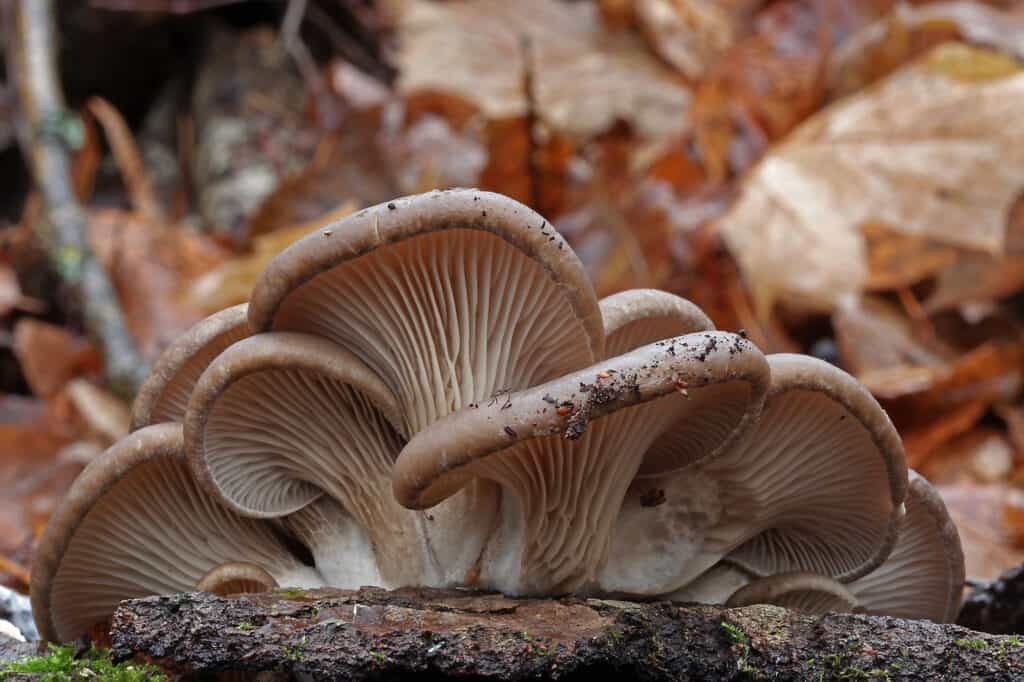
The clustered fashion in which oyster mushrooms grow helps with identification.
©NK-55/Shutterstock.com
Pleurotus ostreatu, also known as an “oyster mushroom” or “pearl oyster,” is a species of edible fungus in the genus Pleurotus. Pleurotus contains diverse species of mushrooms, many of which are edible, and several of which are referred to as “oyster mushrooms.” Among these, Pleurotus ostreatu is one of the best-known and widely cultivated for human consumption. This species of oyster mushroom usually has gray, white, or brown-colored caps. These grow in clusters on the side of dead or decaying wood, often in shapes similar to that of an oyster’s shell. This color and shape inspired some to believe that oyster mushrooms look similar to the real oysters harvested from the ocean. They also have a slightly briny flavor. Oyster mushrooms’ meaty and chewy texture, plus a flavor reminiscent of seafood, have made them a popular ingredient in numerous soup, sauce, and stew recipes.
Oyster mushrooms are among the most popular edible fungi in the world and are widely cultivated across the globe. They rose in prominence from the Eurasia continent (Europe, Asia, and North Africa) but are now cultivated around the world, especially in Asia, and can be found growing in the wild of parts of North America too. Oyster mushrooms are grown by mushroom farmers and harvested from the wild where they grow natively in forest environments. There, they grow on the trunks and limbs of standing or fallen hardwood trees.
Cremini Mushrooms

As the most popular species of edible mushroom in the world, cremini mushrooms are a familiar sight to most.
©Svetlana Lukienko/Shutterstock.com
The cremini mushroom is the Agaricus bisporus species, one of the most popular species of edible fungus in the world, at a particular stage of maturity. Agaricus bisporus is a species within the Agaricus genus in the Agaricaceae family, which includes some of the most well-known cultivated and wild edible mushroom species in the world. Agaricus bisporus is the most widely cultivated and popularly consumed mushroom species across the globe. It is is sold at different stages of maturity. Button mushrooms, cremini mushrooms, and portobello mushrooms are all names for Agaricus bisporus reflecting different periods of growth for the mushroom.
When harvested at an older stage of maturity than the “button mushroom,” but still at an immature stage of growth, Agaricus bisporus is known as a “cremini,” “crimini,” or “baby bella” mushroom. It also goes by several other names. At this stage, the mushroom fruit has been growing for several weeks (approximately 40 days). Cremini mushroom caps are brown or beige in color, having darkened from the white of “button mushrooms.” They have also developed stronger flavor, firmer texture, and more earthy taste as they lost water content in their growth.
Agaricus bisporus grows in the wild, where it may appear in moist, grassy areas such as farmland pastures. However, the species is also widely cultivated across Europe, North America, and Asia. They are a popular ingredient both fresh and dried and appear in many recipes for soups, stir fry, salad, and pasta.
Key Differences
Oyster mushrooms and cremini mushrooms are among the most popular edible mushroom species in the world. There are also several ways in which they are different. The descriptions above begin to describe some of these differences. However, there are more detailed differences in their flavor, appearance, use, history, growing environments, and cultivation needs. Let’s explore these key differences in greater detail now.
History and Origins
Oyster Mushrooms
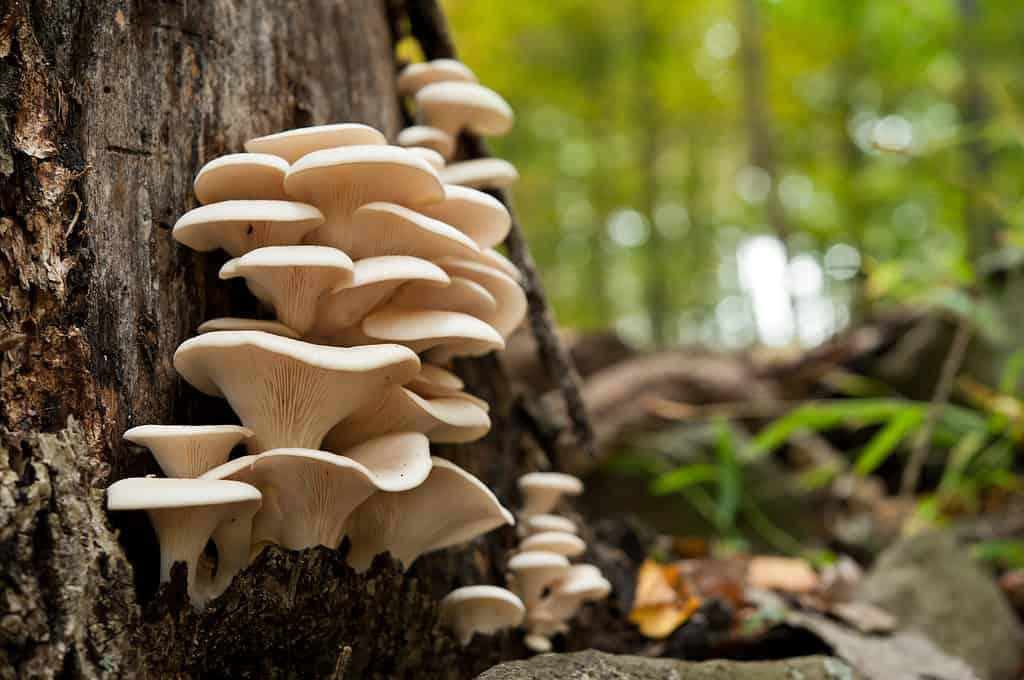
Because oyster mushrooms are relatively easy to grow, some try to cultivate them at home.
©iStock.com/lensblur
Oyster mushrooms are one of the most widely cultivated fungi and dominate the global market of mushrooms grown for human consumption. Because this species is relatively easy to grow, some people even try cultivating them at home from purchased “mushroom grow kits.” Oyster mushrooms first began to gain prominence in Europe, especially Germany, during the foot shortages of World War I. Subsistence measures motivated people to begin cultivating alternative foods – especially proteins that could replace meat. Oyster mushrooms are nutrient-dense and have a firm, meat-like texture. They are a healthy meat alternative that are filling and nutritious.
After the war, oyster mushroom cultivation grew throughout the 20th century and became a common alternative to meat. Oyster mushrooms have a chewy texture and umami flavor. This makes them resilient when cooked in dishes like soups and stews.
Today, oyster mushrooms have global popularity and are second only to the species Agaricus bisporus in production. They are especially popular in Asia, where most oyster mushroom farms are located. In particular, China produces the most oyster mushrooms, followed by countries such as Korea, Japan, Taiwan, Thailand, and the Philippines. However, they can still be found growing in wild forest environments in parts of Asia, Europe, and North America.
Cremini Mushrooms
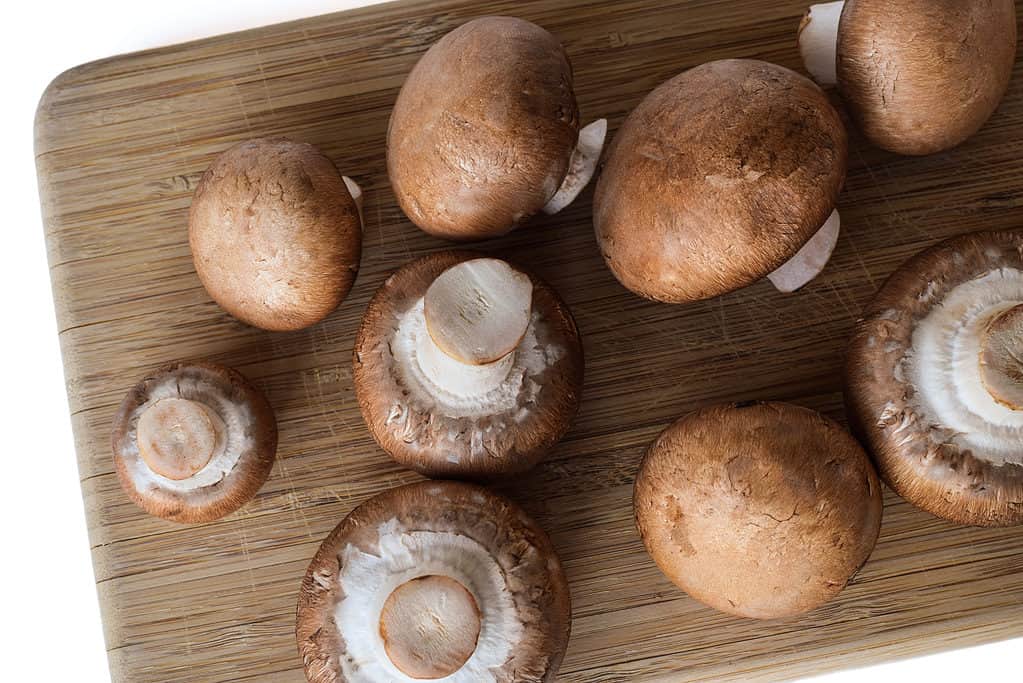
European cultivation of cremini mushrooms can be dated back to the 16th and 17th centuries.
©iStock.com/JulieAlexK
Like oyster mushrooms, cremini mushrooms originated in parts of Asia, Europe, and North America. However, they became popular for cultivation earlier than oyster mushrooms did. In fact, European cultivation of Agaricus bisporus can be dated back to the 1500s and early 1600s. Some historians even report that the royal court of Louis XIV influenced the popularity of mushroom consumption in France, potentially impacting the popularity of cremini mushroom cultivation even into the present era.
Though Agaricus bisporus grows natively in the cooler climates of Asia, Europe, and North America, improvements in technology and international transportation of produce allowed these mushrooms to be cultivated across the world. Today, cremini mushrooms are grown in many countries, including the United States, Canada, parts of western Europe, and many countries in Asia, including India, Korea, Indonesia, and Taiwan.
Appearance
Oyster Mushrooms
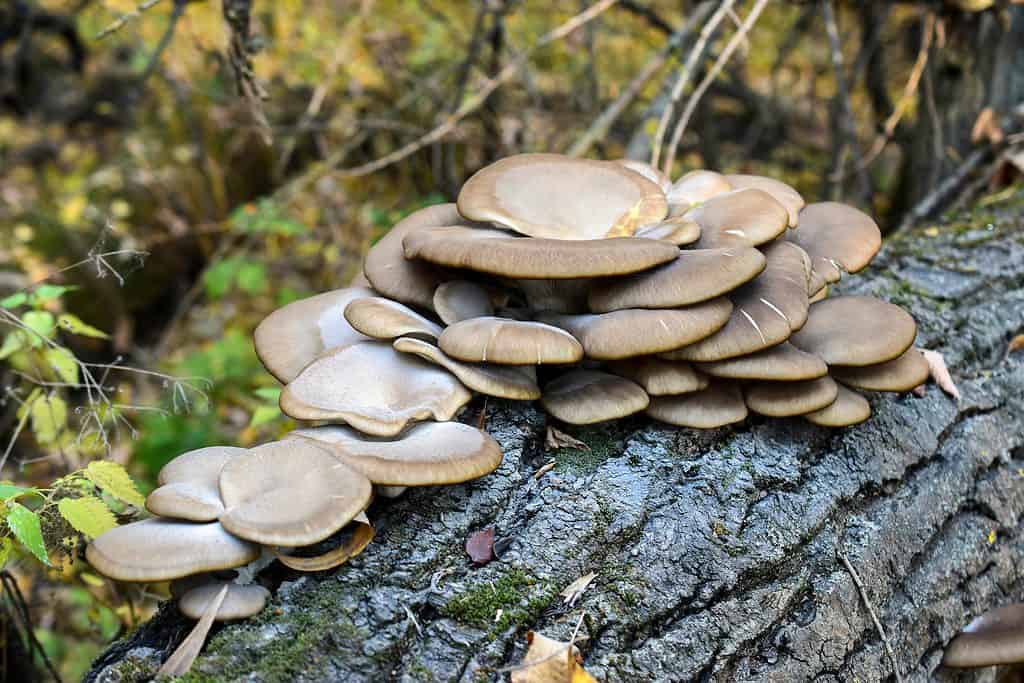
The size of oyster mushrooms varies, and can be as large as 10 inches in diameter.
©LeManilo/Shutterstock.com
Oyster mushrooms can be medium to large in size, with some growing caps that become as big as 10 inches across! Pleurotus ostreatus typically has fan-shaped or oyster-shaped caps that grow off of the side of fallen or standing trees. These caps have almost barnacle-looking grooves, ridges, and bumps. Contributing to the oyster-like appearance is the color of the oyster mushroom, which is usually off-white, brown, or gray in color. Oyster mushrooms have short, almost nonexistent stems, and cream-colored gills. These grow along the stubby stem. If searching for oyster mushrooms in the wild, look for clusters. Oyster mushrooms often grow in groupings of individual mushrooms clumped closely together on the side of a dead tree or stump.
Cremini Mushrooms
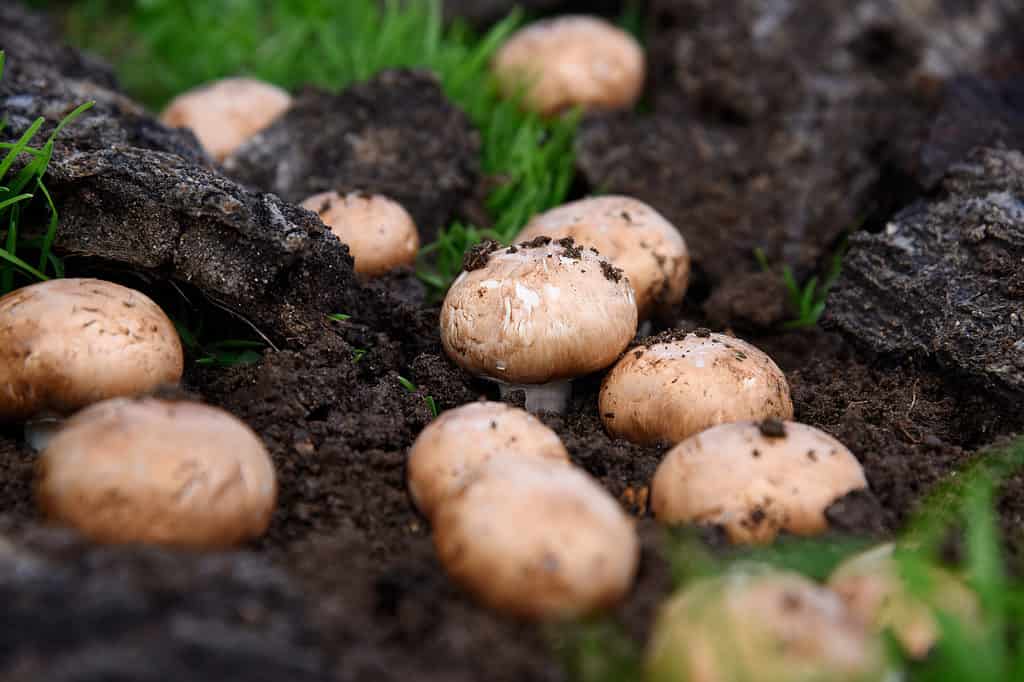
With umbrella-shaped caps, cremini mushrooms have the classic appearance many think of when they think of mushrooms.
©Wild As Light/Shutterstock.com
In contrast, cremini mushrooms have more of the quintessential “toadstool” or classic mushroom-like appearance, with umbrella-shaped caps and taller stems. Agaricus bisporus starts off small, smooth, and white, with curved caps that hide gills. As the mushroom matures, its caps darken into brown and the dark brown gills peek out from underneath. The caps also grow in size, typically reaching between 1 and 3 inches in diameter. The mushroom has white stems that are short, though taller than those of the fan-like oyster mushroom. Cremini mushrooms are usually harvested before they can develop into their full size as a “portobello” or “portabella” mushroom.
Growing Conditions
Oyster Mushrooms
As a saprotrophic species, oyster mushrooms rely on nutrients from dead or decaying wood. Because of this, you can find oyster mushrooms growing on the dead wood of standing trees or fallen logs. Being saprotrophic means that oyster mushrooms play an important role in the forest environment by breaking down the tissue of dead wood. Though they do receive nutrients from dead trees, this is different from being parasitic, like some other mushroom species. This is because oyster mushrooms do not attack the tissue of living trees. Rather, they break down already-dead wood and help to clean up the forest of dead trees.
Because oyster mushrooms need dead wood for nutrients, you will find them growing on the side of deciduous hardwood trees, or occasionally on conifer species. Oyster mushrooms develop into large clusters beginning in the spring, but lasting through summer and into autumn or even early winter, depending on the climate.
If you would like to experiment with growing mushrooms at home, oyster mushrooms are one of the easiest to cultivate! They grow well in cooler temperatures and are fairly resilient. Many online retailers sell everything you need to successfully spawn the mushrooms and create a supportive environment for it to thrive and fruit, resulting in the edible mushroom fruit body. Why not try growing some oyster mushrooms today?
Cremini Mushrooms
While you can find oyster mushrooms growing in a forest environment on dead wood, you should look for cremini mushrooms in moist, grassy pasture land. The Agaricus bisporus species thrives in places such as farm fields where cows and horses graze, which are rich in nitrogen from the animal manure. Moist, grassy areas with animal manure allow the fungus’ mycelium to spread and feed, creating the right environment for the mushrooms to appear.
Cremini mushrooms are another good candidate for at-home cultivation by amateur growers!
You can replicate their native growing environment by mixing compost with manure and keeping the soil moist and warm. If you are successful, a web of mycelium will develop across the top of your manure or compost-manure mixture, and a few weeks later, you will see the white button mushrooms begin to grow.
Though you can harvest them early, when still tiny, this will be the earliest stage of development. The button mushrooms will be tender and very mild in flavor. If you want a stronger, more earthy taste, wait a few weeks. Once the mushroom begins to develop a brown color on its cap, you will know that it is maturing from a button mushroom into a cremini. At that point, when you decide that you are ready to harvest, twist them out of the dirt, brush them off, trim the ends, and eat either raw or cooked!
Scent and Taste
Oyster Mushrooms
You will find that oyster mushrooms are a common ingredient in many different recipes, especially those for various Asian cuisines. The scent and taste of oyster mushrooms is usually described as slightly fishy, briny, or licorice- or anise-like. Though oyster mushrooms gained their name primarily for their appearance, their umami flavor is sometimes called somewhat like that of seafood. Oyster mushrooms also have a meaty, chewy texture that can bring a pleasant flavor and texture that can hold up in soups, stews, or sauces.
Cremini Mushrooms
In comparison, cremini mushrooms have a mild but earthy flavor, which develops further as the mushroom matures. They are very savory and can also be added to stews or soups. However, before you eat them, cooks recommend removing the stems and gills. The gills become woody and less tender as the mushroom develops, and the gills can add an unpleasant murky brown color to your dish. You can eat cremini mushrooms raw, cooked, or dried and reconstituted by adding them to water to soak.
Health Benefits and Use
Oyster Mushrooms
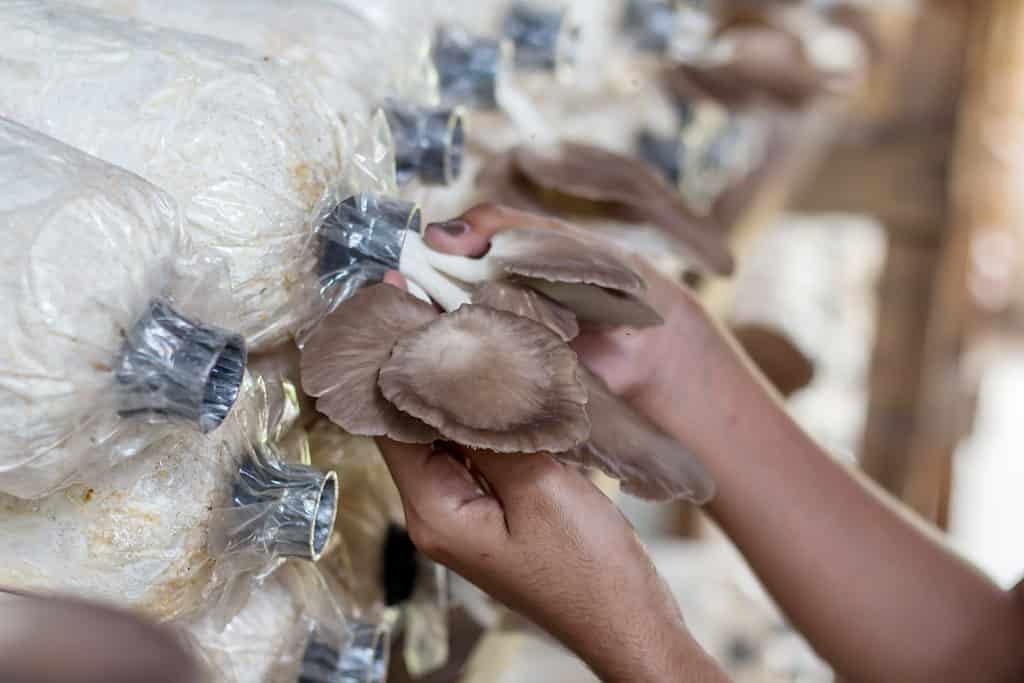
Research suggests that eating oyster mushrooms might be an effective way to improve heart health.
©WIRACHAIPHOTO/Shutterstock.com
Oyster mushrooms have a robust nutritional profile and contain fiber; minerals such as zinc, potassium, iron, niacin, choline, and folate; approximately 3 grams of protein per cup; and some amount of vitamin D and selenium. Some research suggests that eating oyster mushrooms can also be a good way to improve heart health, regulate blood sugar, and maintain a healthy immune system.
Cremini Mushrooms
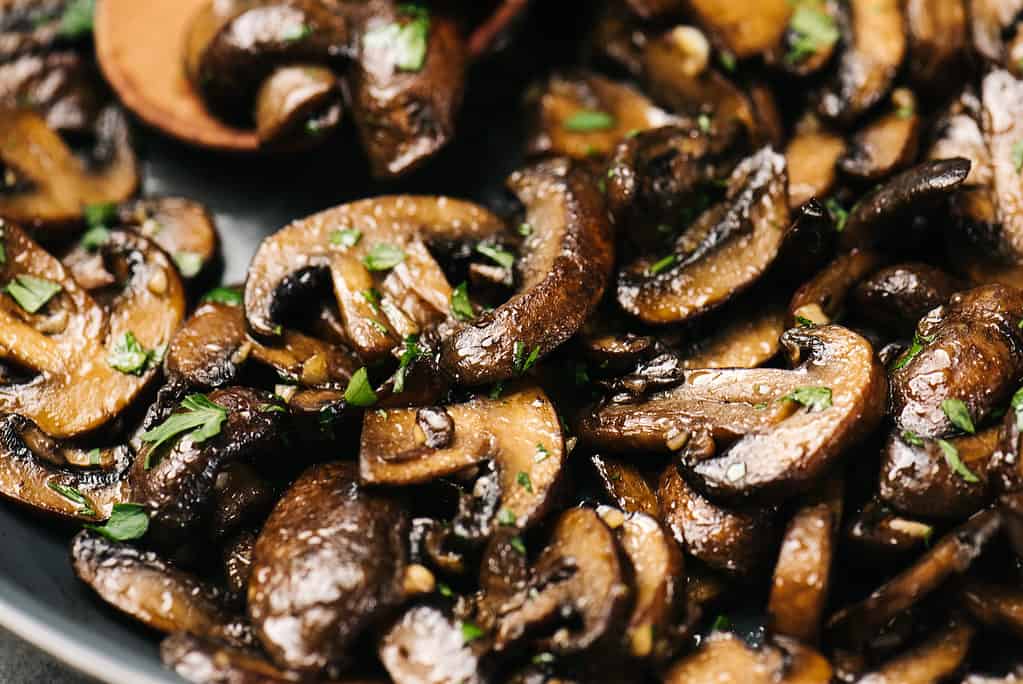
Eating cremini mushrooms could lower blood pressure and reduce the risk of heart disease.
©Cavan-Images/Shutterstock.com
Cremini mushrooms are rich in fiber, potassium, and many antioxidants, and have some amount of protein. Like oyster mushrooms, some research suggests that eating cremini mushrooms can also have a number of different health benefits. These purported benefits include improving digestion, reducing the risk of heart disease, lowering blood pressure, and more.
In Summary
As we have learned, oyster mushrooms and cremini mushrooms are two of the most popular edible mushroom species in the world! They gained their reputation for interesting flavor, versatile use, health benefits, and ease of cultivation. While both can be a great addition to your cooking, they do differ in how they look, where they grow, and their taste. Keep these differences in mind so that you can identify each one – but consider trying each in your next recipe or perhaps even growing one or both species for yourself!
The photo featured at the top of this post is ©
The information presented on or through the Website is made available solely for general informational purposes. We do not warrant the accuracy, completeness, or usefulness of this information. Any reliance you place on such information is strictly at your own risk. We disclaim all liability and responsibility arising from any reliance placed on such materials by you or any other visitor to the Website, or by anyone who may be informed of any of its contents. None of the statements or claims on the Website should be taken as medical advice, health advice, or as confirmation that a plant, fungus, or other item is safe for consumption or will provide any health benefits. Anyone considering the health benefits of particular plant, fungus, or other item should first consult with a doctor or other medical professional. The statements made within this Website have not been evaluated by the Food and Drug Administration. These statements are not intended to diagnose, treat, cure or prevent any disease.
Sources
- PBS, Available here: https://www.pbs.org/food/the-history-kitchen/edible-mushrooms/
- Cornell Extension, Available here: https://ecommons.cornell.edu/handle/1813/9490
- Penn State Extension, Available here: https://extension.psu.edu/mushrooms
- NC State Extension, Available here: https://newcropsorganics.ces.ncsu.edu/specialty-crops/mushrooms/
- Michelle Kuo, Available here: https://www.mushroomexpert.com/pleurotus_ostreatus.html
- Penn State Extension, Available here: https://extension.psu.edu/cultivation-of-oyster-mushrooms
Thank you for reading! Have some feedback for us? Contact the AZ Animals editorial team.






